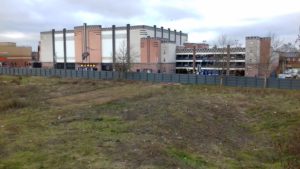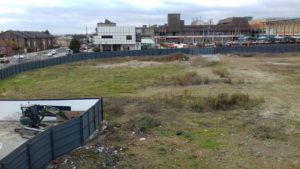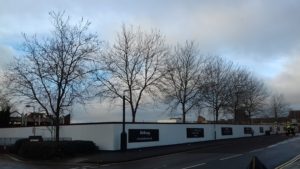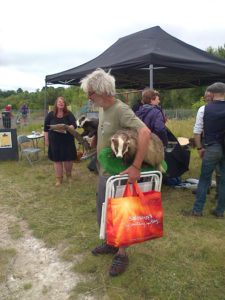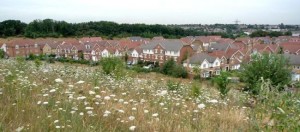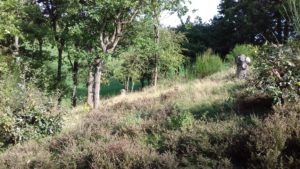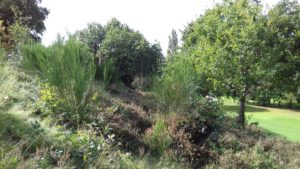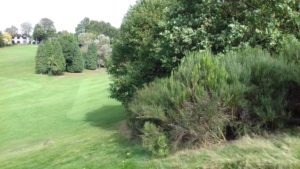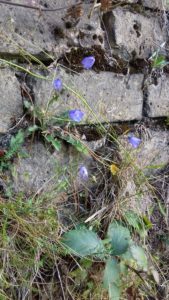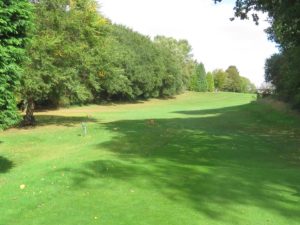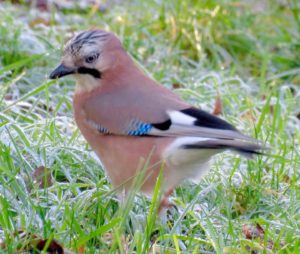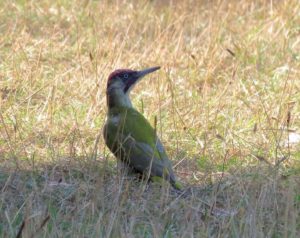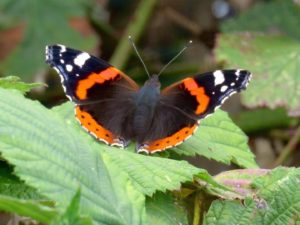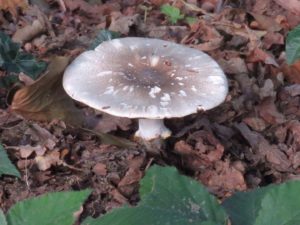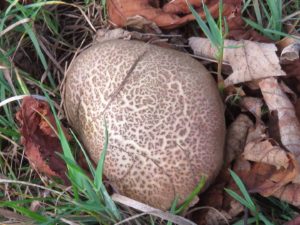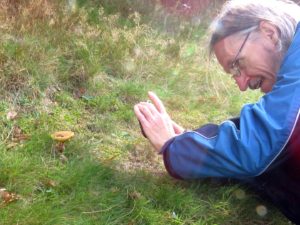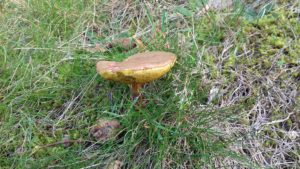The hitherto rare Jersey Cudweed (Gnaphalium luteoalbum) continues to be found as a street ‘weed’ at new sites in Bexley, principally by Mike Robinson, who has recently found it in some roads near to Bexleyheath railway station. Elsewhere it has persisted and increased in Silverdale Rd, and is still present in Parkside Avenue, Barnehurst.
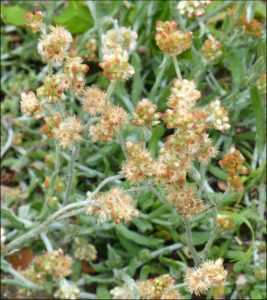
Jersey Cudweed, 15th Aug 2017, Bexleyheath. (Photo: Mike Robinson)
This rather fine-looking garden wall/pavement crack Poppy, pictured at Barnehurst Av. on 9/5/17, was clobbered by the Council’s weed-killing operations just as it was about to flower, and has yet to be identified. Nothing similar has been seen in surrounding gardens.
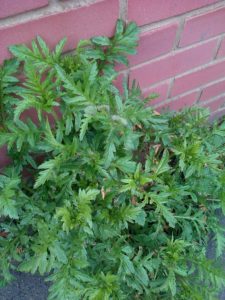
Unidentified Poppy, Barnehurst Av. May 2017. (Photo: Chris Rose)
Fennel, in this case the purple-leaved form, in a North Heath alleyway, was in flower on 24/8/2017.
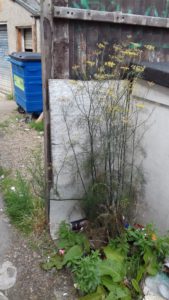
Fennel, North Heath alleyway. 24/8/2017. (Photo: Chris Rose)
A less often seen self-seeded herb, at least outside of gardens and allotment sites, is Borage (Borago officinalis), a Mediterranean region plant that has naturalized elsewhere. Mike Robinson found this specimen on rough ground by some garages in Bexleyheath on 15th August 2017.
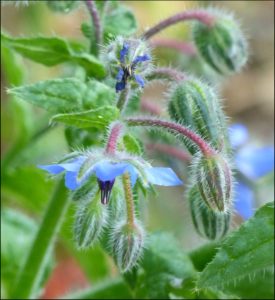
Borage flowers by garages in Bexleyheath, 15th Aug 2017 (Photo: Mike Robinson)
Hollyhock is sometimes seen as a garden escape seedling. This one is in a Barnehurst verge. Another at the foot of a tree outside North Heath Post Office has been dealt with by the tidiness brigade.
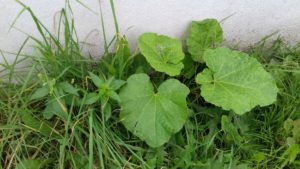
Hollyhock seedling, Barnehurst, August 2017. (Photo: Chris Rose)
This annual Sweet Alyssum (Lobularia maritima) has got into a grass verge on Merewood Rd.
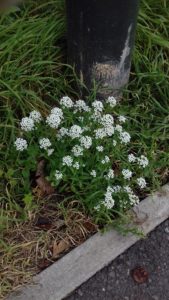
Sweet Alyssum, Merewood Road, 31/8/17. (Photo: Chris Rose)
Musk Stork’s-bill (Erodium moschatum) is of long-standing non-native presence in the UK, with a handful of sites found in Bexley in the last couple of years. This specimen, by a phone box outside the shops at the junction of Northend Road and Parkside Avenue, will have come from the population on the nearby roundabout verges.
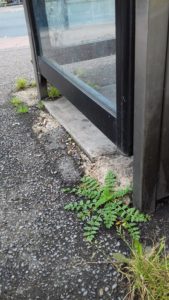
Musk Stork’s-bill, Northend Rd, 31/8/2017. (Photo: Chris Rose)
Variants of the normally white-flowered native Yarrow have been crossed with two other species, producing plants with a wide palette of colour and shades. There is no knowing what the parentage of this self-sown red-purple plant in the verge of Thirlmere Rd, Barnehurst is, but it appears close to Achillea millefolium.
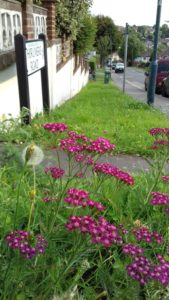
Red-purple-flowered Yarrow cultivar or hybrid. Barnehurst 1st September 2017. (Photo: Chris Rose)
This green-flowered Amaranth and Oilseed rape plants are pictured at the foot of a postbox on Northend Rd near the Perry Street roundabout. They probably got carried there as ‘bird seed aliens’ in the digestive systems of Pigeons.
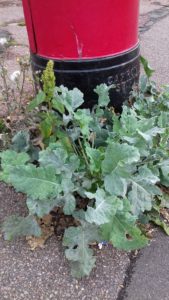
Green-flowered Amaranth and Oilseed Rape, Northend Rd, 31/8/2017. (Photo: Chris Rose)
A fine red-flowered Amaranth, not native, was found in a North Heath alleyway.
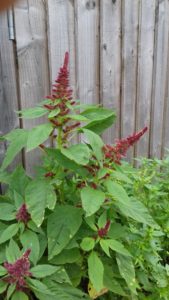
A red-flowered Amaranth, North Heath alley, 4/9/2017 (Photo: Chris Rose)
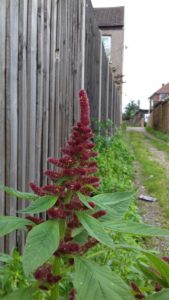
Closer view of a flower spike. (Photo: Chris Rose)
The seed and leaves of various Amaranth species, which come from South America, are eaten.
This Lady’s Mantle (Alchemilla mollis) is a garden escape into a North Heath alley and originates from the Carpathians and Caucasus.
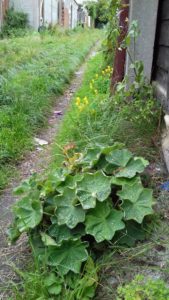
Lady’s mantle, North Heath alley, 4/9/2017. (Photo: Chris Rose)
This stand of Bracken (Pteridium aquilinum), an unusual back-alley denizen, is by a school field in North Heath on land probably never built on, and is a relict of the area’s heathland past.
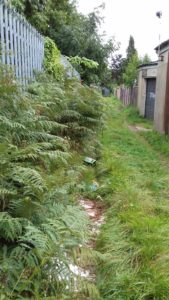
Bracken in a North Heath alley. 4/9/2017. (Photo: Chris Rose)
Perennial Sow-thistle (Sonchus arvensis) is a reasonably frequent but thinly-scattered plant in Bexley, sometimes seen in gardens. It spreads underground to form patches which can be linear when it comes up against a wall, as here. It carries quite large, very bright yellow flowers that have golden glandular hairs on the buds and stalks below. This plant was blooming in a North Heath alleyway on 4/9/17.
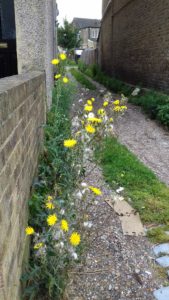
Perennial Sow-thistle. North Heath. 4/9/17. (Photo: Chris Rose)
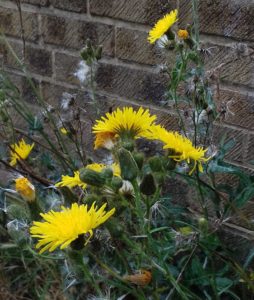
Close up of flowerhead showing coverings of golden glandular hairs. (Photo: Chris Rose)
This Shaggy Soldier (Galinsoga quadriradiata) comes all the way from South America, supposedly originating in central Mexico, but now has a large global range and is a competitive and troublesome weed of agriculture in other countries. It has persisted in pavement cracks by the shops on Bexley Road in North Heath for a few years at least. The Galinsoga by the Fire Station in Bexleyheath are probably this species. Galinsoga were also present on Grasmere allotment site for a couple of years before being weeded right out. There is a similar, but less hairy species, called Gallant Soldier. Galinsoga species are said to have been introduced from Peru into Kew Gardens in 1796 and by 1863 Gallant Soldier was described as ‘quite as common as groundsel’ in the area between Kew and East Sheen.
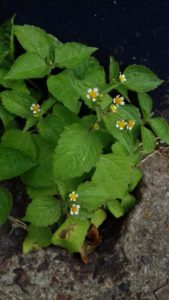
Shaggy Soldier, Bexley Road, North Heath. 4/9/2017. (Photo: Chris Rose)
Mexican Feather Grass/Argentinian Needle Grass (Stipa tenuissima) is likely to become more widespread ‘in the wild’ as a street ‘weed’ as it will produce limited numbers of seedlings in the garden environment, and seeds will stick to clothing and no doubt animal fur, as well as being carried on the wind. It seems able to secrete itself into cracks in paving and is drought tolerant. This plant by a garage on Watling Street will have come from seed originating in the ornamental planting outside the nearby Bexley Council house.
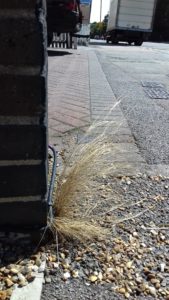
Stipa tenuissima, Watling St. 11/8/17. (Photo: Chris Rose)
Another, larger specimen was growing in a crack outside the pub further down the road.
The fact that this grass and lots of other species which are unlikely to cause any serious problems of invasiveness, are not more widespread in Bexley already, is probably down to the ‘efficiency’ of the Council’s weed-killing operatives, which is rather boring and frustrating for us urban botanists …… !
Compiled by Chris Rose

